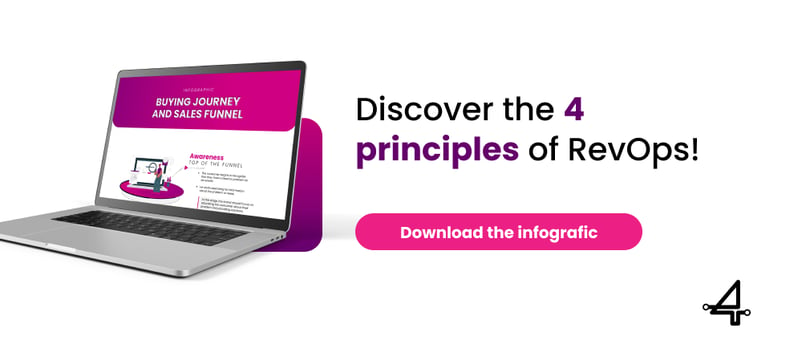Due to the numerous changes that have occurred in the educational scenario today, maintaining organization within an educational institution is crucial so that there is control over everything that happens within the school, and that is where a good CRM platform comes into play.
Typically, a CRM system is seen as something much more common for companies, however, its tools can be great allies in administrative processes, as well as in attracting and retaining students.
In this post, we will discuss how a CRM can be the missing piece for your institution to grow further!
What you will see in this post:
What is a CRM and how can it be used in schools?
Good read!
What is a CRM and how can it be used in schools?
CRM (Customer Relationship Management) is a business strategy that involves the use of technology to manage interactions with customers and potential customers, with the aim of improving relationships with them and increasing loyalty, in addition to potentially generating more sales.
Although CRM is often associated with companies that sell products or services, it can be used in a variety of contexts, including schools.
In a school, a CRM system can be used to manage the relationship with students and their families, potential students and others interested in the institution. It can help automate sign-up processes, manage communications, track interactions and contact history, among other things.
For example, a CRM system can be used to:
- Manage the student enrollment process, allowing families to fill out information online and submit scanned documents.
- Keep a record of all communications with students and their families, including phone calls, emails, and meetings.
- Personalize communication with students and their families based on their individual interests and needs.
- Collect feedback from students and their families, allowing the school to make necessary improvements and adjustments.
- Track students' progress over time, allowing the school to identify areas for improvement and offer additional support if needed.
Thus, a CRM system can be a useful tool for schools that want to improve relationships with students and their families, as well as simplify administrative processes and obtain valuable insights for future improvements that enable actions to be implemented attracting new students, as well as retention.
SEE TOO:
The importance of a CRM for institutions education
The objective of CRM is to maintain a closer and more personalized relationship with customers, which can lead to an increase in satisfaction, loyalty and retention.
In this context, an Educational CRM is especially useful as it can help the institution better understand students' needs and expectations, as well as provide a more personalized and satisfying educational experience. An effective CRM allows the institution to collect data about the student, such as contact information, academic history and communication preferences.
With this information, schools can personalize communication with students, provide academic guidance, and support student success. For example, a school might use a CRM to send personalized reminders for important assignments and tests, suggest relevant extracurricular activities based on a student's interests, or provide information about internship and career opportunities.
Furthermore, in the case of higher education institutions, the Educational CRM It can also be useful in managing alumni relationships, keeping in touch with graduates and supporting their transition into the job market. A CRM can help an institution send personalized invitations to events and networking, share relevant news about the institution, and provide information about continuing education programs.
Another advantage of CRM is that it allows the institution to monitor student interactions and engagement, providing valuable information to adjust and improve the educational experience. For example, if students are not participating in events or activities, the school can use this information to understand why this is happening and take steps to improve the student experience.
In summary, a CRM is a valuable tool for schools and higher education institutions as it can help personalize a student's educational experience, increase student satisfaction and loyalty, support the transition to the job market, and provide valuable information for a better background education. Investing in a CRM can be an effective way to improve the quality of education and maintain competitiveness in the educational market.
Choose the right CRM for your institution
Many people still have questions about how to implement CRM in their company or, in this case, in a school. Based on this assumption, there are some factors that must be taken into consideration to make the right choice.
Choosing the ideal CRM for your educational institution can be a complex process, as there are many options available on the market. However, there are some points that you can consider to find the solutions that best fit the needs of your educational institution.
Below, we will discuss some of the points that should be considered:
1. Identify your specific needs
Before choosing a CRM, it is important to assess the specific needs of your educational institution. Some questions you might ask include: How big is my institution? What are the main business processes that CRM should support? What functionalities are needed, such as lead management, student management, contact management, etc.?
2. Evaluate CRM functionalities
After identifying your needs, you can evaluate the features of each CRM. Check whether the system offers essential functionalities for your institution, such as student relationship management, marketing campaign management, event management, etc. Additionally, evaluate whether the solution offers integration with other important tools, such as e-learning platforms, content management systems, etc.
3. Check scalability
It is important to choose a CRM that is scalable, that is, that can grow with your institution. Check if the solution allows adding new users, expanding functionality, etc.
4. Consider ease of use
The chosen CRM must be easy to use, both for internal users and for students and teachers. Make sure the interface is intuitive and that the solution offers adequate training and support.
5. Evaluate customer support
Check whether the company responsible for the CRM offers good customer support, with clear communication channels and availability to assist at any time in case of problems.
6. Check the cost-benefit
Finally, evaluate the cost-benefit of each solution, check whether the investment in a particular CRM is compatible with your budget and whether the solution offers a good return on investment.
By taking these points into account, you can choose the ideal CRM for your educational institution.
Summary: The implementation of educational CRM can make school administrative processes much more efficient, resulting in relationship actions between the institution and students that are much more meaningful and effective in attracting new students, as well as retaining them.
Now that you know the advantages that a CRM can offer for your administrative routine, take advantage and learn about Hubspot, its features and tools that can optimize your marketing strategies.

































